Occupational Safety Training for the Industrial Laundry Sector
99,000 ₫
Note: The above price is calculated for one person, and the price may fluctuate depending on the number of participants in the course and market movements. For more accurate pricing support, please refer to the pricing table or contact our consulting staff directly.
The Industrial Laundry Safety Training Course is a course that equips Group 3 occupational safety knowledge. The course will raise awareness of how to prevent workplace accidents for participants. Accordingly, the occupational safety training content is closely aligned with Article 18 Decree 44/2016/ND-CP.
Table of Contents
Toggle1. Overview of the Industrial Laundry Sector
a. What is the Industrial Laundry Sector?
The industrial laundry sector is a business sector specializing in providing laundry and cleaning services for clothes, fabrics, and other textile products for clients in industrial and commercial sectors.
In this industry, businesses are often large-scale and equipped with specialized machines and equipment to handle and launder large volumes of clothes and fabrics. Clients of the industrial laundry sector can include hotels, restaurants, hospitals, manufacturing factories, schools, agencies and organizations, and other enterprises.
Industrial laundry services typically include washing, ironing, pressing, folding, and packaging fabric items. Additionally, the industry may also provide services such as cleaning bed sheets, curtains, towels, hand towels, and other materials.
The industrial laundry sector plays an important role in meeting the laundry and cleaning needs of large enterprises and organizations. By utilizing modern technologies and processes, this industry ensures that clothes and fabrics are cleaned, pressed, and maintained in the best possible condition.

b. Types of Industrial Laundry Machines
The industrial laundry sector uses a variety of machines and equipment to perform washing and cleaning processes. Below are some commonly used machines in this industry:
- Industrial washing machines: These are high-capacity machines designed to wash large volumes of clothes and fabrics. Industrial washing machines often feature quick wash modes, the ability to handle tough stains, and automatic adjustment of temperature, water amount, and washing time.
- Industrial dryers: Industrial dryers are used to dry clothes after washing. They have high capacity, reduce drying time, and increase productivity. Industrial dryers have different modes to adjust temperature and drying time according to fabric types.
- Industrial irons: Industrial ironing machines are used to soften and iron clothes after washing and drying. They can be adjusted to suit different fabric types and remove wrinkles.
- Industrial pressing machines: Industrial pressing machines are used to flatten and press various types of clothes and fabrics. They feature large ironing surfaces and steam systems to apply necessary pressure and heat.
- Automatic folding machines: These automatic machines are used to fold clothes and fabrics into neat and uniform units. They can fold items at high speed with precise and consistent results.
- Spin dryers: Industrial spin dryers are used to remove water from clothes and fabrics after washing. They operate at high speeds, shortening drying time and saving energy.

c. Typical Companies in the Industrial Laundry Sector
In Vietnam, there are several notable and popular companies in the industrial laundry sector. Some examples include:
- GIC – Garment Industrialization Corporation: GIC is one of the leading companies in industrial laundry services in Vietnam. They provide laundry, cleaning, and management services for work clothes, fabrics, and other textile products for enterprises across various industries.
- VEGA Corporation: VEGA is a large and reputable industrial laundry company in Vietnam. They provide laundry and cleaning services for clothes, carpets, and other materials for clients in sectors such as hotels, restaurants, hospitals, and schools.
- 5ASEC: 5ASEC is a well-known laundry chain in Vietnam. They provide laundry and cleaning services for personal and household clothes, known for fast, convenient, and high-quality services.
- Fubaco: Fubaco is an experienced industrial laundry company in Vietnam. They specialize in providing laundry and cleaning services for clothes, fabrics, and other textile products for clients in industries such as healthcare, oil and gas, and hospitality.
Note that this list only provides some examples and does not include all industrial laundry companies in Vietnam. Other companies may also play important roles in the industry.

d. Specific Jobs in the industrial laundry sector
In the industrial laundry sector, there are various specific jobs and roles. Some of the main roles include:
- Receiving and sorting staff: These employees receive items from clients and sort them by fabric type, color, washing method, and special requirements. They ensure items are handled correctly and prepared for the next laundry process.
- Laundry operators: Laundry staff operate industrial washing machines and perform the washing process. They adjust temperature, water amount, detergent, and washing time according to fabric types and client requirements.
- Ironing staff: Ironing staff use industrial irons to soften and iron items after washing and drying. They adjust temperature and pressure to accurately and consistently flatten and press clothes.
- Drying staff: Drying staff operate industrial dryers and dry clothes after washing. They adjust temperature and drying time to ensure efficient and safe drying of clothes and fabrics.
- Pressing staff: Pressing staff use industrial pressing machines to flatten and press items. They handle each item individually, ensuring clothes and fabrics are smooth without damage.
- Packing staff: Packing staff prepare and pack washed, ironed, and pressed items. They ensure items are neatly and cleanly packed, ready for delivery to clients.
- Quality control staff: Quality control staff check items after the laundry process to ensure they meet quality standards. They ensure items are properly cleaned, ironed, pressed, and packed without defects.
e. Services in the industrial laundry sector
In the industrial laundry sector, various products are handled and cleaned. Some common products include:
- Work clothes: These include suits, jackets, t-shirts, pants, raincoats, and other specialized garments. Industrial laundry ensures work clothes are cleaned, pressed, and maintained for safety and hygiene.
- Carpets and floor mats: Carpets and floor mats in hotels, restaurants, offices, and commercial buildings often require regular cleaning. Laundry processes provide deep cleaning, odor removal, and refresh carpets, creating a clean and pleasant environment.
- Towels and bedding materials: Towels, face cloths, and bedding in hotels, guesthouses, and restaurants need regular cleaning to ensure hygiene and comfort. Laundry processes ensure items are clean, soft, and fresh.
- Blankets, pillows, and mattresses: These are essential items in the hospitality and healthcare sectors. Industrial laundry helps clean, refresh, and protect them from bacteria, odors, and dirt.
- T-shirts and jeans: These common items are also cleaned, ironed, and refreshed in the industrial laundry sector, keeping them looking new and maintaining their shape.
- Industrial and technical fabrics: Industrial and technical fabrics, including flame-resistant, waterproof, anti-static, and UV-protective fabrics, are also commonly cleaned in the industrial laundry sector.
2. Overview of Occupational Safety Training for the Industrial Laundry Sector
a. What is Occupational Safety Training in the Industrial Laundry Sector?
- Occupational safety training in the industrial laundry sector is a course designed to equip workers with awareness on how to prevent workplace accidents. Employees working directly in the industrial laundry sector are classified as Group 3.
- The occupational safety training course helps employees identify and prevent hazards, reducing risks of workplace accidents during work.
REGISTER FOR OCCUPATIONAL SAFETY TRAINING
b. Training Duration
Initial safety training duration:
- Total training time is at least 24 hours, including examination time.
- 8 hours of theory on occupational safety and labor law policies
- 8 hours of theory on basic knowledge of occupational safety
- 4 hours of theory on specialized training content
- 2 hours of practical training on specialized content
- 2 hours of final theory test
The safety training center will schedule multiple sessions depending on workers’ availability. Typically, there are 6 training sessions over 3 days, provided the employer allows continuous attendance.
Periodic safety training:
- Before the occupational safety card expires, employees who want renewal must complete a periodic occupational safety training, with the duration being at least 50% of the initial training duration.
Explanation: Total periodic occupational safety training time is at least 12 hours, including testing. Upon completion and passing the test, employees will have their occupational safety card renewed.
c. Training Content
| No. | TRAINING CONTENT | TRAINING DURATION (HOURS) | |||
| Total | Including | ||||
| Theory | Practical | Test | |||
| I | Occupational safety policies and laws | 8 | 8 | 0 | 0 |
| 1 | Overview of legal documents on occupational safety and hygiene. | 6 | 6 | ||
| 2 | Standards and technical regulations on occupational safety and hygiene. | 1 | 1 | ||
| 3 | Specific regulations of government agencies regarding new construction, expansion, or renovation of facilities for production, usage, storage, and inspection of machines, equipment, materials, and substances with strict occupational safety requirements. | 1 | 1 | ||
| II | Basic knowledge of occupational safety | 8 | 8 | 0 | 0 |
| 1 | Basic knowledge of hazardous and harmful factors in the workplace. | 4 | 4 | ||
| 2 | Methods to improve working conditions. | 1 | 1 | ||
| 3 | Safety culture in production and business. | 1 | 1 | ||
| 4 | Rights and obligations of employers and employees; safety policies; functions and responsibilities of safety officers. | 1 | 1 | ||
| 5 | Occupational safety regulations, signage, use of safety equipment and personal protective equipment; first aid skills and occupational disease prevention. | 1 | 1 | ||
| III | Specialized training content | 6 | 4 | 2 | 0 |
| Comprehensive knowledge of machines, equipment, substances generating hazardous factors; risk assessment and management; safe working procedures with machines, equipment, and hazardous substances. | 6 | 4 | 2 | ||
| IV | Final safety training test | 2 | 2 | 0 | 0 |
| Total | 24 | 22 | 2 | ||
See more training content for all 6 groups
d. Occupational Safety Card
After completing the occupational safety training and passing the test, employees will be issued an occupational safety card (commonly referred to as Group 3 safety certificate).
The Group 3 safety card includes information such as name, date of birth, specific job and workplace, training duration, red stamp, and signature confirming completion of the training.
According to regulations in Clause 2, Article 24 of Decree 44/2016/ND-CP, there are 2 cases:
- If the employer and employee have an employment contract, the employer must sign and stamp the safety card for the Group 3 employee after completing the training and passing the test.
- If the employee is freelance or seasonal, without an employment contract, the training unit must sign and stamp the safety card after the employee completes the training and passes the test.

3. Identifying Hazards in the Industrial Laundry Sector
In the industrial laundry sector, there are several potential hazards that can affect business processes and operations. The following are some hazards that need to be recognized and addressed in this industry:
- Occupational safety: During the operation of industrial laundry machines and equipment, there is a risk of accidents such as collisions, cuts, electric shocks, and burns. Therefore, ensuring occupational safety is crucial. This includes training employees on safety, using personal protective equipment (PPE), and adhering to occupational safety regulations.
- Technical malfunctions: Machines and equipment in the industrial laundry sector may experience technical issues, causing production disruptions and loss of efficiency or downtime for repairs. Regular maintenance, inspection, and checks are important to reduce the risk of malfunctions and ensure smooth operations.
- Environmental pollution: Industrial laundry can generate environmental pollution, particularly from wastewater treatment and detergent usage. To minimize negative impacts, businesses must comply with environmental protection regulations, properly treat wastewater, and use non-harmful cleaning agents.
- Detergents and chemicals: Detergents and chemicals used in industrial laundry can be harmful to human health and the environment if not used and handled correctly. Safe usage, controlling concentrations, and sustainable waste management are essential.
- Microbial risk management: During industrial laundry processes, there is a risk of bacterial contamination and disease from clothing and materials being processed. Implementing strict hygiene protocols, including personal hygiene, safe waste handling, and bacterial control, is critical to ensure safety and sanitation.
4. Safety Measures for the Industrial Laundry Sector
To ensure safety in the industrial laundry sector, the following important safety measures should be implemented:
- Employee training: Ensure that all employees are trained in safety and fully understand occupational safety rules. This includes guidance on using personal protective equipment (PPE), safety procedures, and machine operation protocols.
- Use of personal protective equipment (PPE): Ensure all employees are provided with and correctly use PPE such as safety glasses, masks, gloves, safety shoes, and chemical-resistant coats, depending on job requirements. PPE helps protect employees from accident and chemical risks.
- Temperature and pressure control: Ensure that washing machines, dryers, and other equipment operate within safe temperature and pressure ranges. Regularly inspect and maintain equipment to ensure stable and safe operation.
- Chemical management: Use safe detergents and chemicals, and ensure proper storage, usage, and disposal according to regulations. Employees must be trained on the safe handling of chemicals and follow proper dosing and procedures.
- Waste management: Safely handle and dispose of waste according to regulatory requirements. Ensure proper classification and disposal to minimize negative environmental impact.
- Equipment inspection and maintenance: Regularly check and maintain machinery and equipment to ensure stable and safe operation. This includes inspecting electrical wiring, mechanical parts, valves, filters, and safety devices such as thermal sensors, pressure sensors, and safety sensors.
- Microbial risk management: Apply strict hygiene protocols to prevent the spread of bacteria and disease. Ensure laundry, handling, and transportation processes are followed to maintain safety and sanitation for employees and customers.
- Safe transportation: If the business provides laundry transportation services, ensure safety measures during transport, including vehicle inspection and maintenance, secure packaging, and protection of clothing from external factors.
- Periodically conduct labor environment monitoring in factories, collect and analyze harmful factors for workers, and adjust to reduce hazards to prevent occupational diseases.

5. Benefits of Occupational Safety Training in the Industrial Laundry Sector
An Toan Nam Viet provides businesses with the following benefits upon completing occupational safety training courses in accordance with Decree 44/2016/ND – CP regarding occupational health and safety:
- Employees can recognize potential workplace hazards and take preventive measures to avoid accidents.
- Businesses can establish risk prevention measures in production, operation, and maintenance processes.
- Reduce costs associated with workplace safety risks.
- Continuous production increases labor productivity and product quality.
- Ensure compliance with labor safety laws, avoiding legal risks.
- Enhance credibility and professionalism, thereby elevating the company’s brand image.
Nam Viet’s training courses provide solutions to prevent external hazards, helping individuals avoid dangers that could lead to injury or even death.
REGISTER FOR OCCUPATIONAL SAFETY TRAINING
6. Customer Feedback After Completing Training
An Toan Nam Viet has years of experience supporting businesses across Vietnam, particularly in the southern provinces. This responsibility is highly valued, which is why our Occupational Safety Training program is increasingly professional. The company’s growth has been fueled by both positive feedback and constructive suggestions from our partners. Below are some testimonials from clients we have served.
Bac Nam E&C Investment and Construction Joint Stock Company
“My first experience with An Toan Nam Viet was impressive due to the 24/7 support from their consulting team. The training was organized quickly and conveniently for our company. Thank you very much for your service!”
Hoa Dat Construction and Trading Joint Stock Company
“Nam Viet’s service has greatly simplified occupational safety and helped complete safety documentation for work processes. The consulting team was enthusiastic and timely in answering our questions. Five stars for Nam Viet.”
See more customer interviews after using the service from An Toan Nam Viet
7. An Toan Nam Viet’s Occupational Safety Training Capability
An Toan Nam Viet is a reputable and high-quality occupational safety training center in Vietnam. Our training courses are conducted continuously at manufacturing workshops, factories, or construction sites across the country (all 63 provinces of Vietnam).
REGISTER FOR OCCUPATIONAL SAFETY TRAINING
Occupational Safety Training License
- An Toan Nam Viet has been inspected and certified by the Department of Labor – Ministry of Labor, Invalids and Social Affairs, granting certification for qualified occupational safety training. This further strengthens our training capacity.

Training Materials and Lectures
- Before being used in occupational safety training courses, materials are reviewed to ensure accurate content and effective application.
- Instructors follow teaching methods standardized by An Toan Nam Viet, developed by experts in occupational safety training to maximize knowledge retention for trainees.
Facilities
- Controlling classroom factors affecting training improves teaching efficiency and knowledge retention.
- Our training facilities provide spacious classrooms with standard lighting, training equipment, and other amenities.
8. Nationwide Reputable Occupational Safety Training Center
At An Toan Nam Viet, we prioritize professional dedication to occupational safety training. For us, teaching workers to protect themselves contributes to building the nation.
To ensure effective training, we meticulously prepare every detail, from tools, equipment, curriculum, materials, audio, to lighting.
Our instructors are experts with many years of experience. They have conducted research on hazard identification across all industries and methods to prevent them.
Lectures are practical and engaging, helping trainees comfortably absorb knowledge. Content strictly follows Decree 44/2016/ND-CP.
Trainees learn safety measures and self-protection methods, applying them appropriately in real work scenarios.
Our training center proudly offers professional and reputable occupational safety training with advantages:
- Competitive training costs with ensured quality.
- Flexible training schedules according to company operations.
- Fast and compliant certificate issuance procedures.
- Instructors with extensive professional experience.
- Classrooms optimized for effective teaching and knowledge retention.
- Lectures tailored to occupational safety in enterprises.
- An Toan Nam Viet works professionally and diligently to provide accurate and prompt support.

9. Additional Industrial Laundry Occupational Safety Training Materials
- Occupational Safety Training Materials Set
- Industrial Laundry Occupational Safety Materials
- Occupational Safety Training Test
1 review for Occupational Safety Training for the Industrial Laundry Sector
No comments yet

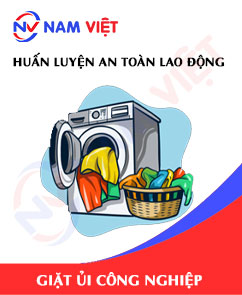
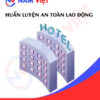
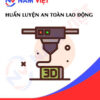



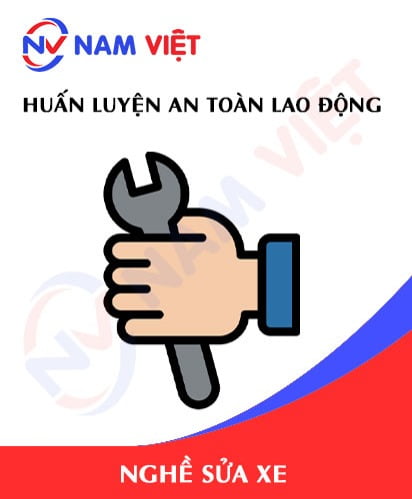
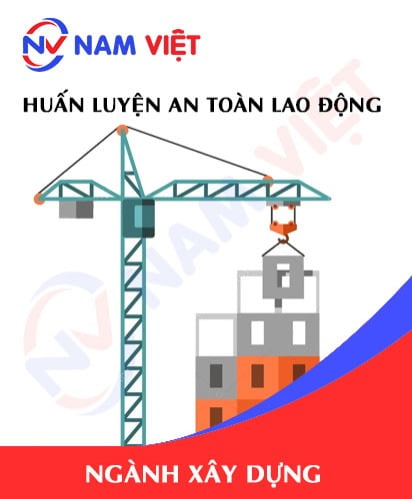

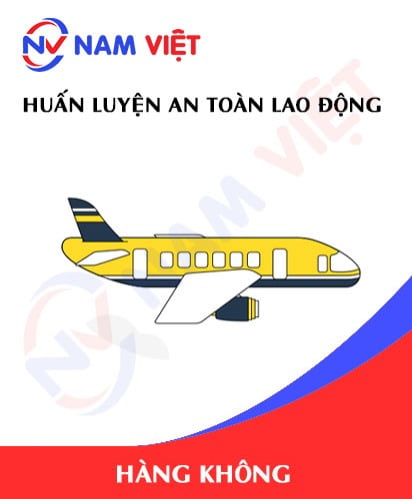
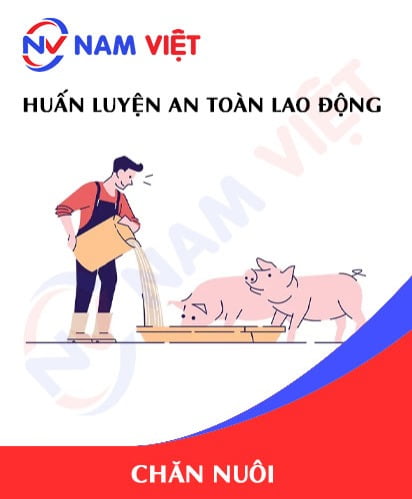
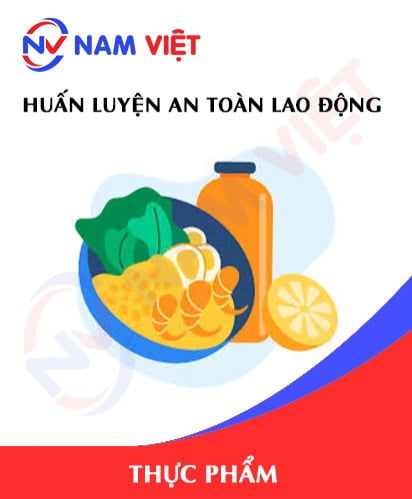
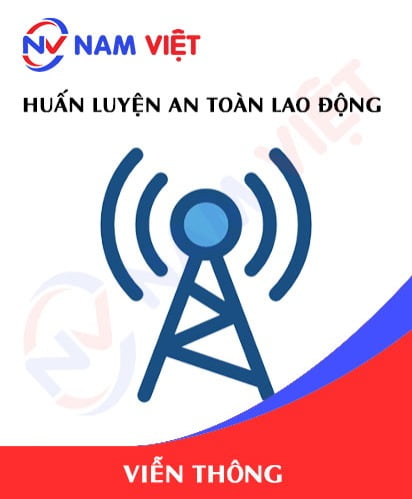
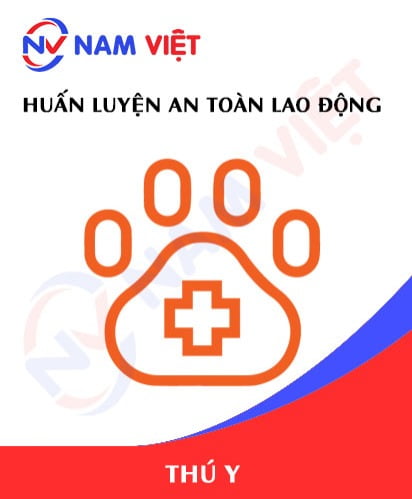
caotiensyhung.07081999
Uy tín nha!